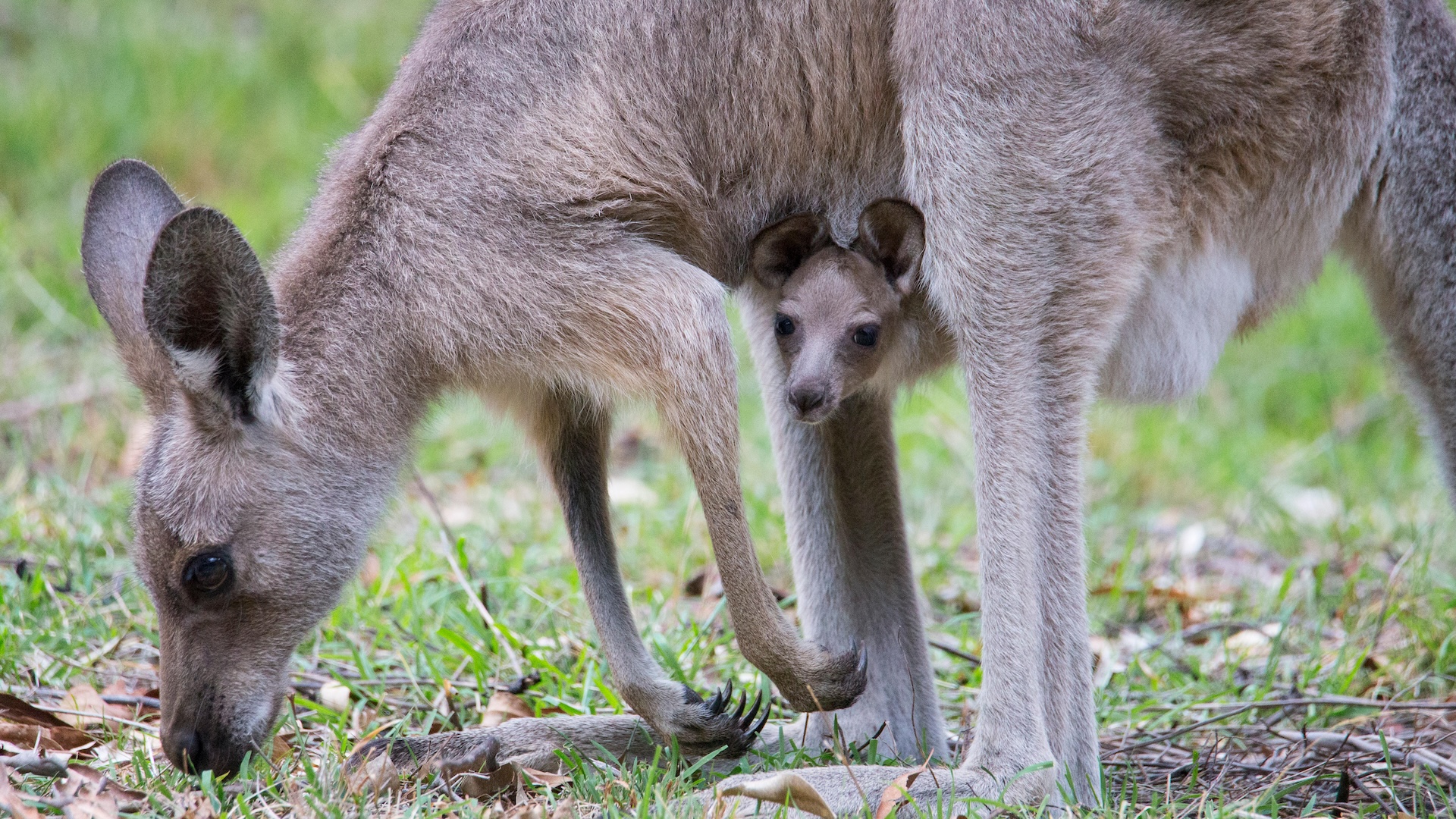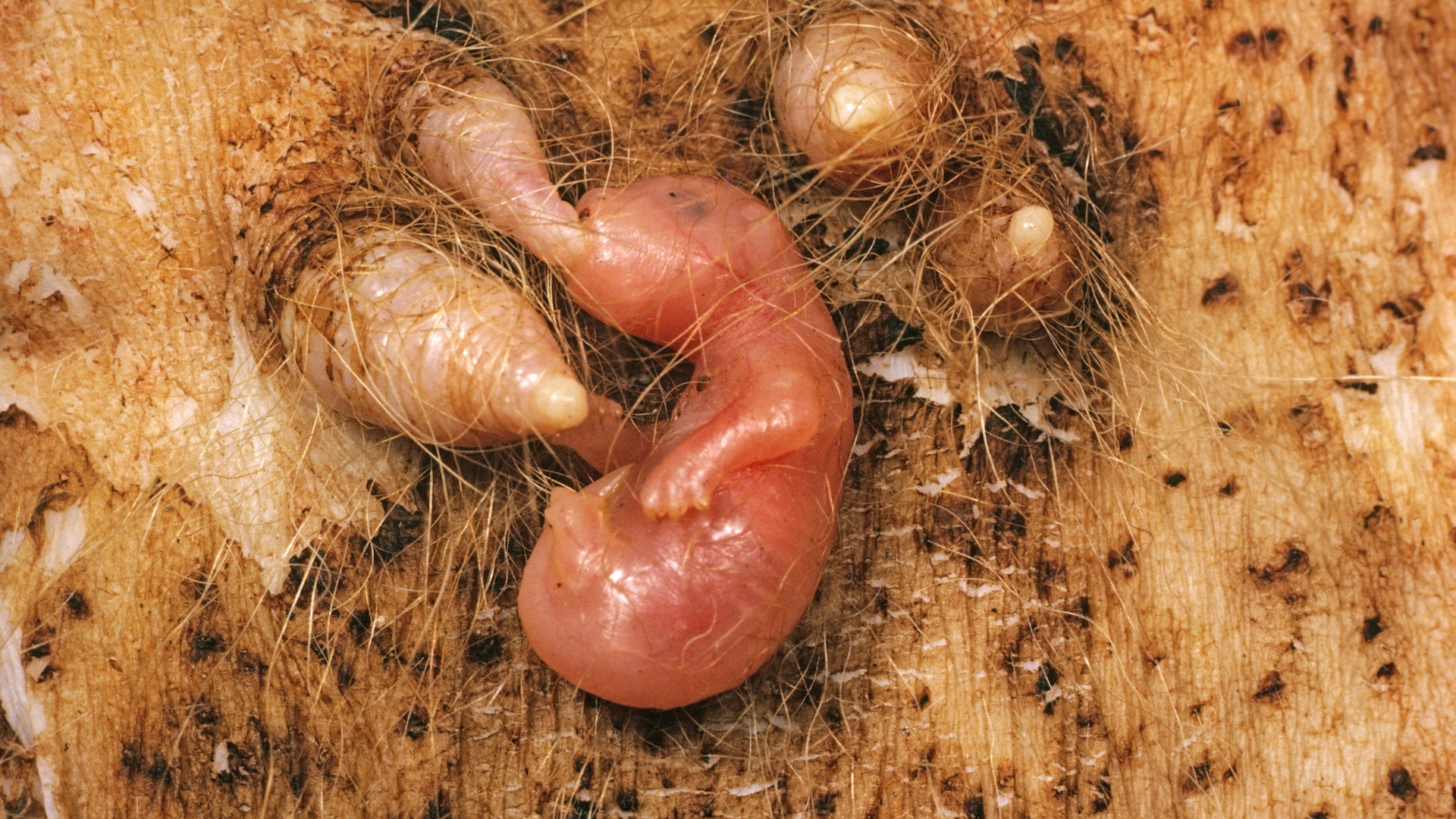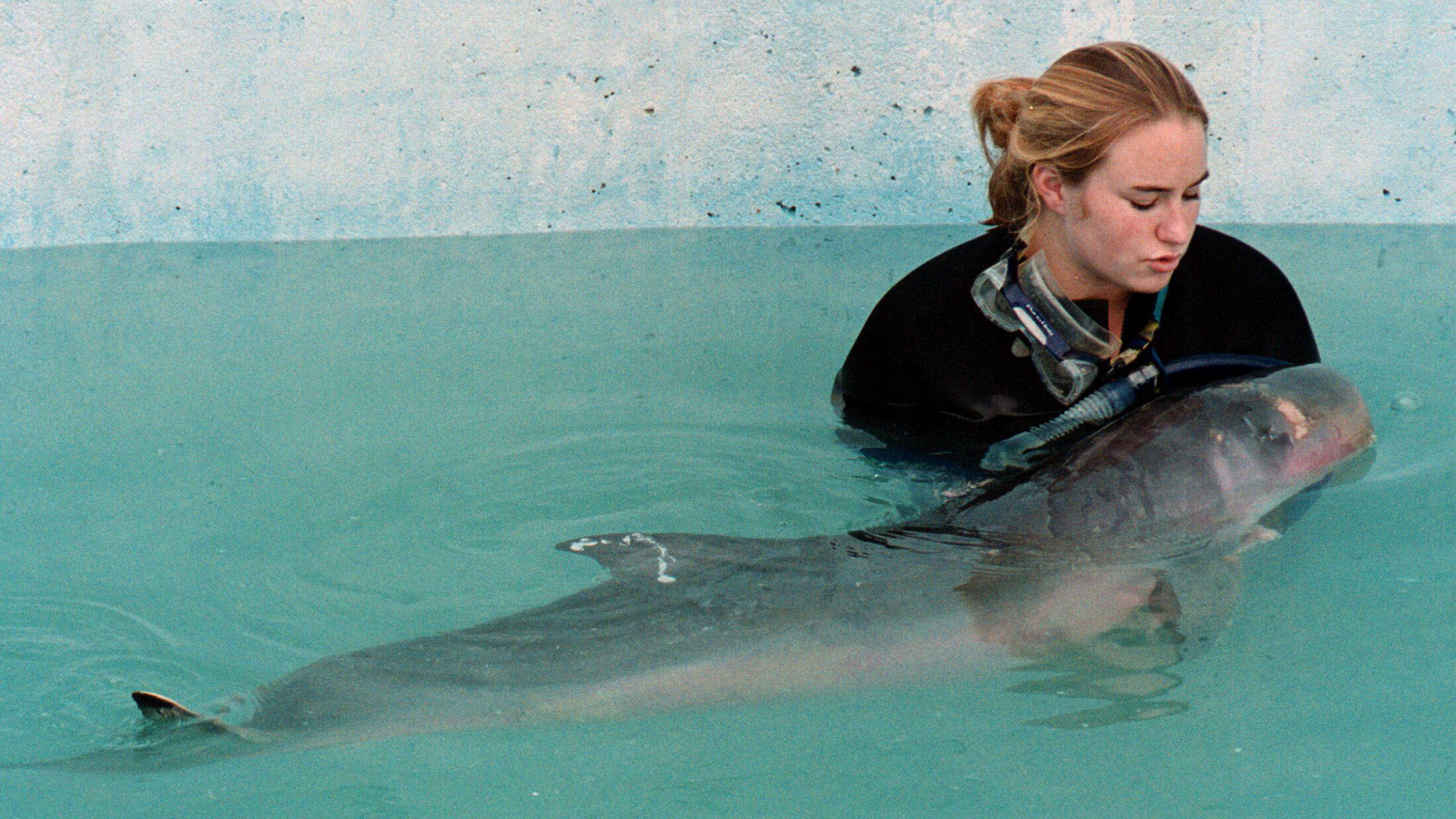Why do kangaroos have 3 vaginas?
Female kangaroos have one tail, two feet and three vaginas when they're giving birth.

Kangaroos are pretty peculiar on the outside: They're the world's largest marsupials, they hop to get around, and they use their tails as a fifth limb. But they're also pretty unusual on the inside: Female kangaroos have two vaginas — or three, if they've given birth. Why could that be?
The most likely explanation is that it's an adaptation to Australia's unforgiving environment. Multiple vaginas — and uteruses, of which they also have two — enable female kangaroos, and all marsupials, to have multiple offspring at different stages of development at any given time. That helps increase the chances of one surviving to adulthood.
" They can have a joey that's still dependent on them, but it's out of the pouch," Dr. Marcie Logsdon, an associate professor in the College of Veterinary Medicine at Washington State University, told Live Science. "They can have a joey that's in the pouch, and they can have one that's kind of in reserve up there, waiting to start development."
A newborn kangaroo is underdeveloped and needs to spend a long time in its mother's pouch nursing and growing before it's ready for the outside world.
"The first 10 months, they go from being these pink, scraggly skeletons into little fuzzy cute babies that you see in the pictures," Kelly Forrester, a doctoral student at the University of Alberta who has co-authored studies on kangaroo reproduction, told Live Science. "And then the last eight months, you call them 'young at foot,' where they're coming in and out of the pouch and they're learning to hop around, but they're still pretty gangly and they can't thermoregulate … so 18 months of their life is spent highly reliant on mom."
Related: Why are there so many marsupials in Australia?
All that nursing in the pouch requires a huge amount of energy for the mother kangaroo. "Lactation is very, very expensive," Logsdon said. "Lactation is more expensive than pregnancy, oftentimes."
Get the world’s most fascinating discoveries delivered straight to your inbox.
When kangaroos experience drought conditions, they often can't get enough food to continue lactating, and that joey in their pouch dies. To pass their genes to the next generation, they need to produce another joey as quickly as possible.

Luckily, pregnancy and lactation don't stop a kangaroo's estrous, or reproductive cycle. At any time during estrous, a male kangaroo's sperm can travel up one of the two lateral vaginas and fertilize an egg, which implants in whichever of the two uteruses isn't being used at the moment. (Although many other marsupials have a two-pronged penis to help send sperm through both vaginas, kangaroos have only one.)
But if there's already a joey in the pouch, there's a problem: That joey will need that pouch for 18 months, but an egg goes from conception to birth in about 30 days, according to Forrester. So the kangaroo's body puts the egg's development on pause.
"If they're waiting for optimal conditions or maybe for their young to come out, that fertilized egg will just sit, waiting," Forrester said.
Once it's fully developed and ready to be born, the jellybean-size joey emerges through a new opening. "The central [vagina] doesn't fully connect to the opening into the outside until a female marsupial becomes pregnant for the first time," Logsdon said. "Then it connects and it opens up, and that's their road out."
The kangaroo's strange anatomy may also be a reason for their offspring's small size. Through a quirk of evolution, a female kangaroo's two urinary tracts pass through the spaces between the three vaginas.
"If the babies got a lot larger, then there would be an issue because of that strange anatomy," Logsdon said. "It's not a very conducive environment to have large things passing in and out if you're going to have your urinary tract worked up in that too."
Animal quiz: Test yourself on these fun animal trivia questions

Ashley Hamer is a contributing writer for Live Science who has written about everything from space and quantum physics to health and psychology. She's the host of the podcast Taboo Science and the former host of Curiosity Daily from Discovery. She has also written for the YouTube channels SciShow and It's Okay to Be Smart. With a master's degree in jazz saxophone from the University of North Texas, Ashley has an unconventional background that gives her science writing a unique perspective and an outsider's point of view.
You must confirm your public display name before commenting
Please logout and then login again, you will then be prompted to enter your display name.

